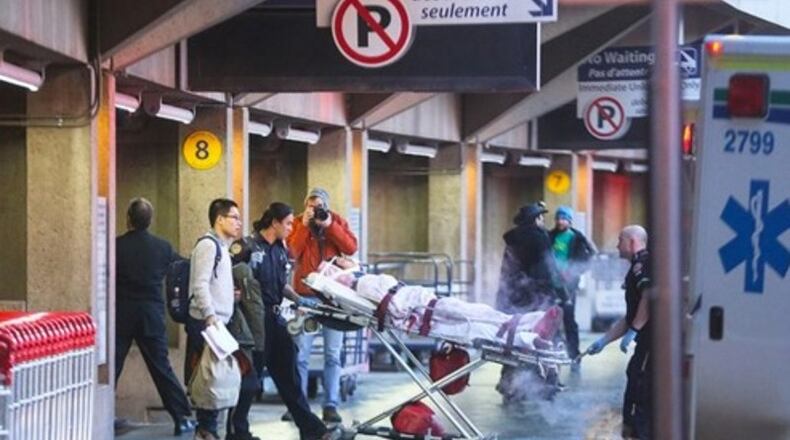A new report on a flight that ran into heavy turbulence offers a lesson on why it's important to buckle your seat belt on flights.
An Air Canada flight in December 2015 from Shanghai to Toronto encountered severe turbulence over the mountains of Alaska about eight hours into the flight, according to the Transportation Safety Board of Canada on Monday as it released its investigative report on the incident.
About 35 minutes before hitting the "area of known turbulence," flight crews turned on seat belt signs and asked passengers to fasten their seat belts because of the upcoming turbulence through announcements made in English, French and Mandarin.
"Despite these measures, many passengers were not wearing their seat belts when the flight encountered severe turbulence," according to the Transportation Safety Board.
Ultimately, 21 passengers were injured, including one serious injury.
It's far from the only time turbulence caused injuries on a flight. Some other recent examples:
Severe turbulence on flight injures passengers and crew
24 injured when JetBlue flight from Boston to Sacramento hits turbulence
The Federal Aviation Administration recommends that passengers keep their seat belts buckled at all times. Passengers are injured during turbulence every year, according to these figures from the FAA:
Credit: Kelly Yamanouchi
Credit: Kelly Yamanouchi
One of the reasons is a phenomenon called "clear air turbulence." It's the result of atmospheric pressure, jet streams, air around mountains, weather fronts and thunderstorms, according to the FAA.
"It can be unexpected and can happen when the sky appears to be clear," the FAA warns.
About the Author
Keep Reading
The Latest
Featured





